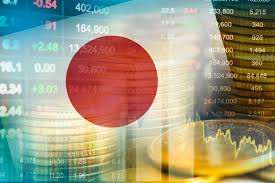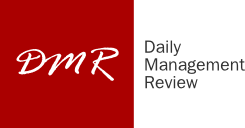
The International Monetary Fund (IMF) has revised Japan’s economic growth projections downward, highlighting the challenges facing the nation’s economy. The IMF now anticipates Japan's Gross Domestic Product (GDP) to expand by 0.6% in 2025, a decrease from the earlier forecast of 1.1%. This adjustment follows a modest 0.1% growth in 2024, indicating ongoing economic sluggishness.
Looking ahead to 2026, the IMF projects a growth rate of 0.6%, marking a 0.2 percentage point reduction from previous estimates. These revisions underscore the persistent challenges Japan faces in revitalizing its economy amid external pressures.
Impact of U.S. Tariffs on Exports and Domestic Consumption
Recent tariff measures introduced by the United States, including a 24% levy on Japanese exports and a 25% duty specifically targeting automobiles, have significantly impacted Japan's export-driven economy. These tariffs have disrupted trade flows and introduced considerable uncertainty for Japanese exporters.
Despite positive developments in domestic wage growth, which have bolstered household disposable income and consumption, the prevailing uncertainty stemming from these tariffs has dampened consumer confidence. This uncertainty poses challenges to sustaining domestic demand, a critical component of Japan's economic stability.
In response to these economic headwinds, the Bank of Japan (BOJ) is anticipated to adopt a more cautious approach to monetary policy. While the central bank aims to gradually increase interest rates toward a neutral setting of approximately 1.5%, the timing of such adjustments remains uncertain due to the prevailing trade-related risks.
The IMF suggests that the BOJ will proceed with rate hikes at a slower pace than previously projected. This measured approach reflects the central bank's need to balance the goal of achieving its 2% inflation target with the realities of external economic pressures.
Navigating External Risks and Domestic Economic Goals
Governor Kazuo Ueda of the BOJ has indicated a commitment to continuing rate increases, contingent upon sustained wage and inflation momentum. However, the complexities introduced by U.S. trade policies have added layers of uncertainty to the BOJ's decision-making process.
The upcoming policy meeting scheduled for April 30–May 1 is expected to maintain current interest rates while acknowledging the risks associated with external trade tensions. This stance reflects the BOJ's cautious approach in navigating the interplay between domestic economic objectives and international trade dynamics.
The IMF has highlighted the "associated uncertainty" resulting from recent tariff announcements as a significant risk factor for Japan's economy. Given Japan's reliance on exports, particularly in the automotive sector, the nation remains vulnerable to fluctuations in global trade policies.
This economic uncertainty has the potential to influence investment decisions, production levels, and employment trends within Japan. The challenges posed by these external factors necessitate careful policy considerations to mitigate adverse impacts on the domestic economy.
(Source:www.marketscreener.com)
Looking ahead to 2026, the IMF projects a growth rate of 0.6%, marking a 0.2 percentage point reduction from previous estimates. These revisions underscore the persistent challenges Japan faces in revitalizing its economy amid external pressures.
Impact of U.S. Tariffs on Exports and Domestic Consumption
Recent tariff measures introduced by the United States, including a 24% levy on Japanese exports and a 25% duty specifically targeting automobiles, have significantly impacted Japan's export-driven economy. These tariffs have disrupted trade flows and introduced considerable uncertainty for Japanese exporters.
Despite positive developments in domestic wage growth, which have bolstered household disposable income and consumption, the prevailing uncertainty stemming from these tariffs has dampened consumer confidence. This uncertainty poses challenges to sustaining domestic demand, a critical component of Japan's economic stability.
In response to these economic headwinds, the Bank of Japan (BOJ) is anticipated to adopt a more cautious approach to monetary policy. While the central bank aims to gradually increase interest rates toward a neutral setting of approximately 1.5%, the timing of such adjustments remains uncertain due to the prevailing trade-related risks.
The IMF suggests that the BOJ will proceed with rate hikes at a slower pace than previously projected. This measured approach reflects the central bank's need to balance the goal of achieving its 2% inflation target with the realities of external economic pressures.
Navigating External Risks and Domestic Economic Goals
Governor Kazuo Ueda of the BOJ has indicated a commitment to continuing rate increases, contingent upon sustained wage and inflation momentum. However, the complexities introduced by U.S. trade policies have added layers of uncertainty to the BOJ's decision-making process.
The upcoming policy meeting scheduled for April 30–May 1 is expected to maintain current interest rates while acknowledging the risks associated with external trade tensions. This stance reflects the BOJ's cautious approach in navigating the interplay between domestic economic objectives and international trade dynamics.
The IMF has highlighted the "associated uncertainty" resulting from recent tariff announcements as a significant risk factor for Japan's economy. Given Japan's reliance on exports, particularly in the automotive sector, the nation remains vulnerable to fluctuations in global trade policies.
This economic uncertainty has the potential to influence investment decisions, production levels, and employment trends within Japan. The challenges posed by these external factors necessitate careful policy considerations to mitigate adverse impacts on the domestic economy.
(Source:www.marketscreener.com)





